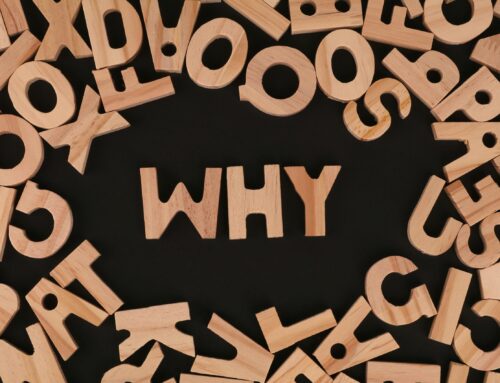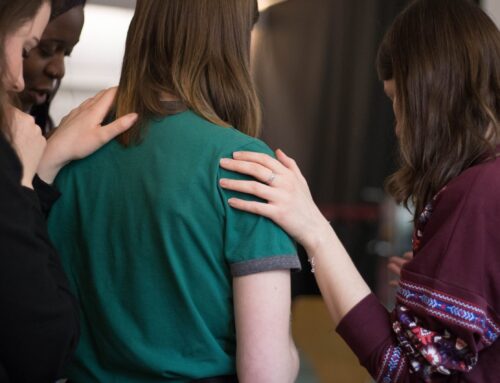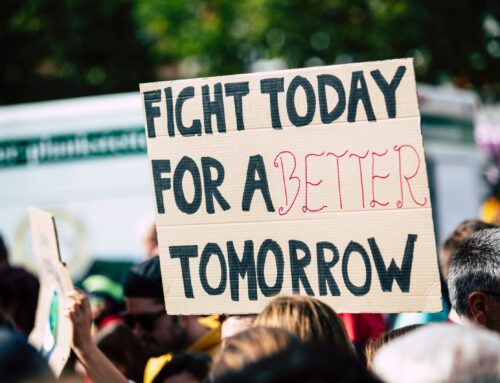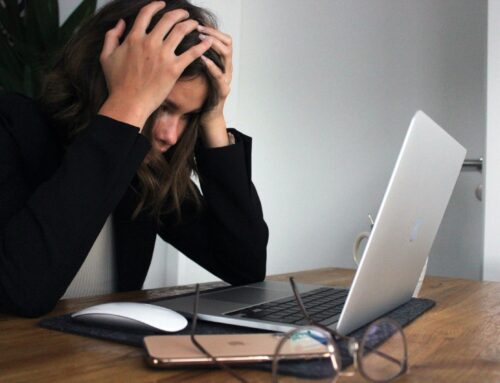 Benjamin Franklin’s aphorism, “An ounce of prevention is worth a pound of cure,” finds its way into admonishments about everything from changing the oil in your car to setting aside enough savings for retirement. Applied generally to health and wellbeing, as it most often is, “an ounce of prevention” inhabits the space also occupied by the upstream/downstream analogy: it is better (and cheaper) to keep people from falling into the river upstream, than to pull them out once they float downstream. In the elaborated version of that story, the citizens of Downstream design increasingly successful (and progressively more costly) methods to rescue people from the river after they fell in (or, perhaps, were pushed in) upstream. Eventually, the story goes, the Downstream crew travels upstream to find out why people end up in the river in the first place and begins to invent ways, called prevention, to keep that from happening.
Benjamin Franklin’s aphorism, “An ounce of prevention is worth a pound of cure,” finds its way into admonishments about everything from changing the oil in your car to setting aside enough savings for retirement. Applied generally to health and wellbeing, as it most often is, “an ounce of prevention” inhabits the space also occupied by the upstream/downstream analogy: it is better (and cheaper) to keep people from falling into the river upstream, than to pull them out once they float downstream. In the elaborated version of that story, the citizens of Downstream design increasingly successful (and progressively more costly) methods to rescue people from the river after they fell in (or, perhaps, were pushed in) upstream. Eventually, the story goes, the Downstream crew travels upstream to find out why people end up in the river in the first place and begins to invent ways, called prevention, to keep that from happening.
The story is a cautionary tale about healthcare. A major entry in the expansive catalogue of critiques of the American healthcare system is that its primary (or only) focus is downstream;
we have developed better and better treatments for health problems that might have been avoided if we had made needed and less expensive changes upstream.
Although the idea of shifting the emphasis toward prevention is attractive in many ways (who wouldn’t prefer non-invasive lifestyle changes to coronary bypass surgery?), it faces daunting obstacles, not the least of which is that the “ounce of prevention” might actually be far bigger, heavier, and longer than just an ounce—so the answer to “Do you want fries with that?” is yes, if the upstream way to avoid bypass surgery requires saying no to that question not just once, but hundreds of times over several decades.
Thus it is that many of us in fact would not prefer lifestyle changes to bypass surgery, except in the abstract. And the health care system definitely prefers bypass surgery to lifestyle changes, as does the net worth of cardiac surgeons, pump technicians, and hospital administrators. Legislating prevention, even for proven upstream successes such as seat belts, has never been especially popular on the everlasting frontier that is the “live free or die” culture of the United States; even some undoubtedly protective prevention strategies, such as smoking cessation or sunscreens, have had incomplete success. Since late 2020, we have witnessed both elation and frustration in getting Americans vaccinated against COVID-19; the most successful approach, requiring it, has prevented hospitalizations and saved lives, but has also been challenged by highly politicized resistance. So it is that today US colleges and universities are back to square one, debating whether to require COVID-19 vaccine for the entering class of 2022/2023.
In this fractious and unsettled arena we now encounter mental health, where, once again, our approach, both on and off campus, has been almost exclusively downstream—and downstream has become a pressured, stressful, and crowded place to be.
Both the experience of psychological distress, in one form or another, and levels of need or demand for mental health services, have risen among college and university students.
Recent studies show that those trends picked up steam during the pandemic (but be careful: the pandemic is not as “over” as we hope, or pretend it to be). More students want more help; on many campuses, they (and in some institutions, their parents) ask for easier and faster access to counseling, extended hours (sometimes, 24/7), and longer term therapy. The proportion of entering students who arrive with a history of mental health concerns, a legacy of counseling or psychiatric care, and/or one or more prescribed psychotropic medications continues to rise. Physicians, nurse practitioners, and physician assistants who provide on-site medical services to students consistently report that at least a third of visits to student health centers are caused by mental health concerns, whether explicitly named in advance or discovered in the course of a visit. Downstream has become a very busy place, the days punctuated by crises and urgent visits; the mental health professionals (counselors, social workers, psychiatrists, and their colleagues) who are the citizens of Downstream have had to keep creating better ways to respond to this increasing—some would call it insatiable—demand for care and services.
So it is that health and counseling centers on campuses across North America have begun to innovate in an attempt to respond to the blurry mixture of needs and demands (more about that later) facing them.
Many have specified the details of their service model with increasing precision, using very direct language, in order to avoid disappointing or angering students and parents who had different (and higher) expectations about what mental health services the institution could provide for them—especially how fast, how often, and for how long. Some have adopted stepped care service models, which question the assumption that every student who seeks care needs individual therapy at the outset of their counseling experience; groups, peer assistance, websites, apps, and linkages to other campus offices (notably, advising, career services, and recreation) provide alternatives. Waiting lists, though often disguised by various clever phrases, have appeared earlier and earlier in the academic term. Lots of institutions have contracted with vendors of night and weekend phone or web services for triage, short-term assistance, or referrals. More radical experiments, such as 25 minute visits on demand, have had various degrees of success.
All of these attempts to respond to students’ symptoms, concerns, and needs amount to “demand management,” which is an increasingly common downstream strategy; when it works, it serves as an alternative to hiring more counselors to provide the same 50-minute hour sessions to more students, more often, or for a longer time. It is now common to hear “We can’t hire our way out of this” regarding students’ mental health needs. Indeed, hiring more and more professional mental health staff of any discipline and persuasion runs the considerable risk of setting off both philosophical and practical dumpster fires; that approach exemplifies the “If all you have is a hammer, everything looks like a nail” proposition and also violates the principle of useless repetition (erroneously, though attractively, attributed to Albert Einstein), which holds that insanity (ironically, here) is defined as doing the same thing you’ve done before and expecting a different result. All of that is commonly summarized by administrators as, “If we hire more counselors, students will just fill up all their time, and we’ll keep hiring more.”
Demand management can help do exactly that, manage demand—but it has not proven to be a panacea, partly because neither the subject (providers) nor the object (students) have easily accommodated to it.
Most often, what students want is individual therapy, more or less when they want it. Online after-hours services are thriving, but students have generally been less receptive to other on-campus demand management approaches, such as group therapy. And demand management, by definition, responds to, rather than reduces, demand.
Back, then, to the upstream/downstream story. What do we know about why demand has twirled out of control, or why so many students are experiencing psychological distress, or why campus health and mental health services can’t keep up? Start with this: it is—and not just during, or because of, the pandemic—an anxious, distressing, worrisome, stressful, and confusing time. It is hardly necessary to recite all the factors that, when integrated and combined in all the different ways that they affect human beings, have beaten people (students, and us) down, weakened their defenses, undermined their resiliency, and pushed them beyond their capacity to cope. In this existential moment, the litany of current crises just updates the lyrics of Billy Joel’s song, “We didn’t start the fire” (from 1989, by the way—33 years ago). Every month, every week, every day, every hour something else—now the Russian invasion of Ukraine, with the senseless, useless, horrible deaths of soldiers and civilians in a war that no one can win, brought home in grisly photographs and videos over and over again. A student said to me, in a Zoom meeting last week, “What is there to believe in, to hope for?” Could we, or they, cope better with the war, or the spiking divisiveness and anger in our culture, or the clear and present danger of climate change, or inflation, or the looming cloud of yet another pandemic surge if we had not already endured two years of hardship, isolation, sickness, and loss? Traditional age undergraduates who start college later this year have known only an unsettled nation, an unstable planet, and an uncertain future, all of that shot through with educational, economic, and social inequities; their older peers, our many adult and returning learners, share those experiences in a broader context of complex life challenges and responsibilities. Uncertainty dominates our world—as it also did on September 11, 2001; in 1989, when Billy Joel sang “We didn’t start the fire”; and in the tense years of hot and cold wars that came before.
But our visit upstream would also reveal something else: a lack of legitimate, humane developmental education before college, parenting masquerading as friendship (and failing at both), ridiculously low levels of investment in many public schools, and cultural values so mixed up that only money matters most. Too many students have come to believe what they do matters more than who they are. Too many think “busy” equals “worthwhile.” Too many fear failure so acutely that they shortchange their learning. Too many hide or disguise themselves to avoid disappointing, or having confrontations with, their parents, or teachers, or peers. The differential suffering imposed by inequity has cheated too many out of their potential. Uncomfortable feelings might impede their forward focus, so moments, or hours, of unhappiness or worry become enemies to be vanquished. Too many did not develop the perspective, or skills, to accept and manage those feelings, or to take the long view during short-term discomfort. Too few found that a run, a swim, a walk with a friend, playing a musical instrument, some quiet time alone, a great book, a hike in the woods, or a scan of the stars can rekindle strength. Too few learned to take a deep breath, close their eyes for a minute, and carry on. Too few successfully distinguish online from in real life.
Demand reduction lives there, upstream. “An ounce of prevention” in mental health is a complex prescription. Would we, as a society, want our children to accept, value, and celebrate themselves? Would we want them to grow into strength, resiliency, and the ability to weather challenges, learn from their mistakes, and support each other? Would we want them to know when, and how, to ask for help? It is as easy to say yes to those questions, in the abstract, as it is to say no, in the abstract, to “Do you want fries with that?” But just as saying no to “Do you want fries with that?” has to happen over and over again across several decades, saying yes to what we want for our children requires checking our priorities, renewing our commitments, and re-upping our investments over and over again across multiple decades as well. Recent storms of abusive legislation in a growing cohort of states cast a pessimistic shadow over our chances.
On and off campus, our downstream services, and an increasing variety of demand reduction strategies, for mental health and wellbeing have limited elasticity; there will come a breaking point. It’s not just about having more counselors.
The world continues to turn, and its many metaphorical fires (plus the horribly literal ones) continue to burn—including the ones we, in fact, started. To reduce, and not just manage, demand for mental health services we have to become health promoting universities in a health promoting society and culture. Tall order? Of course it is—as are the equally challenging, and equally urgent, needs to promote sustainable development, prevent further global warming and climate change, and elevate the lives, prospects, and health of all human beings and of our planet and its creatures.
We can feel, and be, overwhelmed. Or, yes, we can start today. Saying no to “Do you want fries with that?” is actually easier the second time. Same with small acts of kindness—as goes the joke about surgical residents learning to do appendectomies, “see one, do one, teach one.” Take a walk with an upset student; it’ll be good for both of you. Yes, of course, we have to work together, to organize, to find the power in numbers—and that will make it safer to take more risks. Set a goal: become a health promoting university within five years—or three or four.
And the next time a student asks, “What is there to believe in, to hope for?” have an answer: believe in yourself, hope for community. Say that to yourself too. It’ll be easier the second time.
Richard P. Keeling, MD, Chairman, wrote this essay for the Council for the Advancement of Standards in Higher Education (CAS) and presented it at their Council of Representatives Meeting on April 11, 2022.
Keeling & Associates, LLC is a comprehensive higher education consulting and professional services firm that creates “change for learning” through its strategic planning, consultation, and executive search services across North America. Let’s create change for learning together.






Leave A Comment